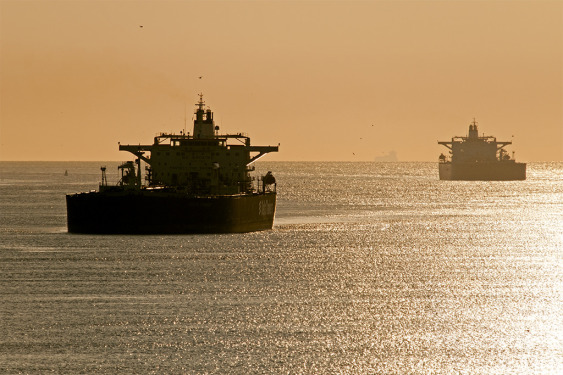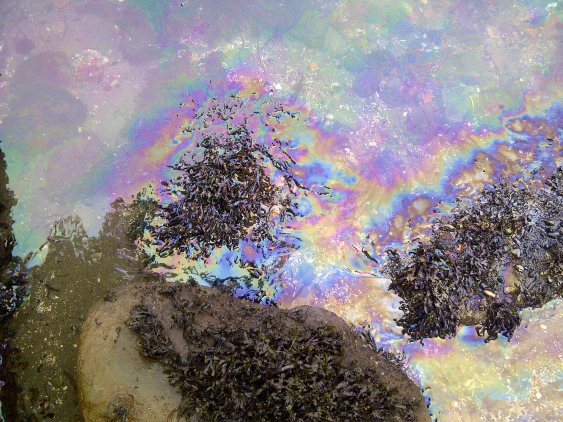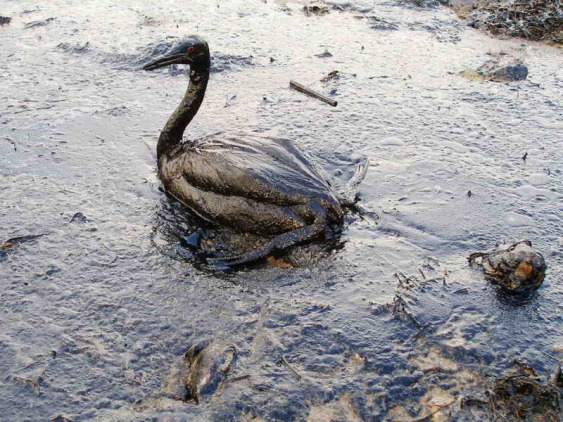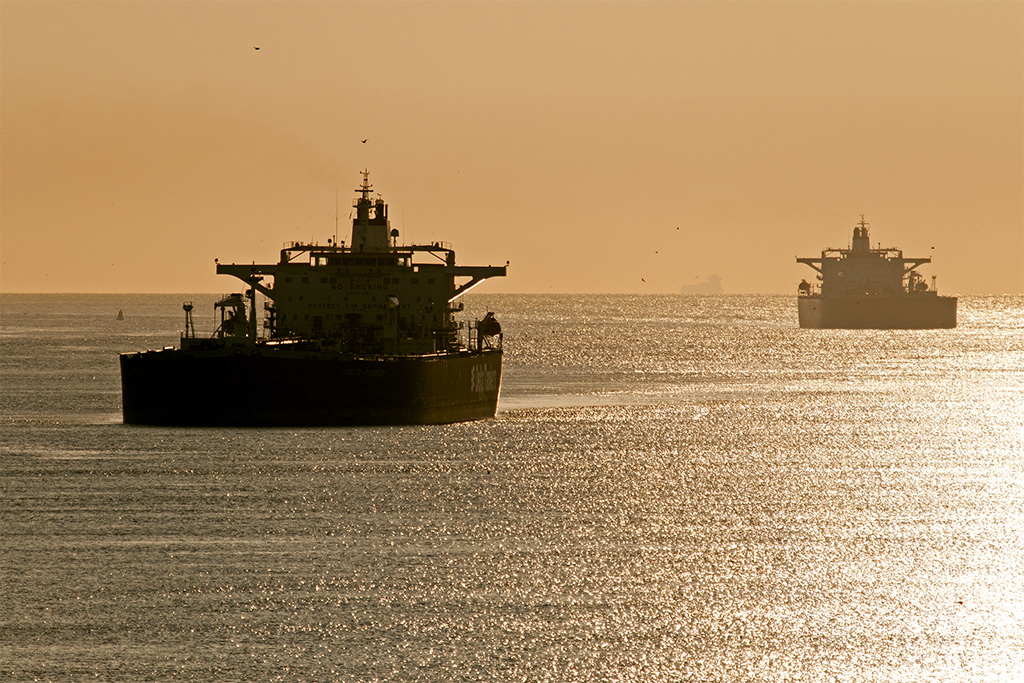The Northwest is evaluating more than a dozen major projects that would add oil tankers and other major cargo ships to the region’s waters. Nearly all of these plans would affect Washington’s waters: either on the Columbia River, Grays Harbor, or in the labyrinthine channels of the Salish Sea. In the simplest terms, increasing ship traffic means increasing risk. And as the region is contemplating an astonishing jump in vessel traffic, it’s worth pausing to examine the record.
As with actual oil spills, near misses are frighteningly common. Natural phenomena, like winds and tides, compound human blunders to result in collisions and groundings (and narrowly averted ones). Alongside these mishaps are countless instances of mechanical failure. They do not always spill oil, but the risk is nearly omnipresent.
For example? In the months of November and December 2011 alone, large bulk or container vessels, often carrying hundreds of thousands of gallons of fuel oil in single-hulled tanks, experienced nine separate incidences of mechanical failure or a loss of propulsion in Washington waterways. During that same two-month period, three different laden oil tankers drifted into dangerous collision courses with other vessels, prompting Coast Guard authorities to intervene. Indeed, episodes of tank vessels straying into the path of oncoming traffic, and vice versa, occur with startling regularity, spared only by Coast Guard operators hundreds of miles away who happen to notice an unusual blip on their screens.

In other cases, the catastrophes were not so much averted as simply avoided by blind luck. Had events unfolded just a bit differently, Washington’s most important waterways would been subjected to another major spill.
Below is an abridged collection of cases when things very nearly went very wrong.
Pacific Ocean, off the Columbia River (July 1994)
The Chinese bulk freighter Tian Tan Hai collided with the fully laden tank barge Cascades approximately 30 miles west of the Columbia River entrance. The collision ripped a 72-foot gash in the Cascades, which was carrying 2.5 million gallons of oil at the time, and it badly damaged the Tian Tan Hai as well. Fortunately, the cargo tanks on the barge and fuel tanks on the freighter were spared major damage.
Columbia River, near Astoria (October 1994)
High winds broke the crude oil tanker Keystone Canyon free of her mooring lines at a pier in Astoria, Oregon. Pushed by hammering winds, the ship drifted sideways across the Columbia River and struck the Astoria-Megler Highway Bridge before grounding in the mud on the Washington bank. One of the cargo tanks ruptured during the incident, but because the ship was unloaded at the time the Columbia was spared a potentially major spill. (The ship was stocked with at least 588,000 gallons of fuel oil in the tanks, though.)
Strait of Juan de Fuca (October 1996)
The oil tanker Arcadia, carrying almost 7.9 million gallons of fuel oil, lost control of its steering near the entrance to Rosario Strait. Unable to adjust its course, Arcadia crossed into the intended path of another an outbound oil tanker, Arco Fairbanks. Crews managed to restore steering in time for the pilot of the Arcadia to make a full 360-degree turn while the Arco Fairbanks kept a safe distance.
Patos Island (July 1997)
Bound for the Westshore Coal Terminal in Tsawwassen, British Columbia, the 736-foot coal carrier Continental Spirit lost power and drifted more an hour before it finally dropped anchor within 500 yards of a reef off Patos Island in the northern San Juans. Though empty of coal, the vessel was carrying 600 tons of heavy oil and 80 tons of diesel fuel.
Anderson Island (September 1998)
The freighter ship Monchegorsk, carrying enough fuel oil for a trans-Pacific voyage from Olympia, Washington to Petropavlovsk, Russia, ran aground at Anderson Island, not far from the Nisqually National Wildlife Refuge in the south Puget Sound. The grounding did not damage the fuel tanks, and tugs refloated the vessel the following day. The captain was absent from the bridge at the time of the incident.
Port Angeles (February 1999)
The APL Japan, a 900-foot container ship carrying an estimated 500,000 gallons of fuel oil, lost power while approaching Port Angeles, Washington. The ship came within several hundred yards of running aground before a tug managed to tow it away from shore.
Columbia River, near The Dalles (May 2009)
A tank barge carrying two million gallons of gasoline collided with the locks at The Dalles Dam, ripping a sixteen square-foot hole in the outer hull of the barge and temporarily shutting down river traffic through the locks. The cargo tanks of the barge did not rupture, and the crew was able to offload its cargo at Pasco.

Columbia River, near Hood River (July 2009)
A tank barge carrying one million gallons of gasoline ran aground on an uncharted sand bar below the Hood River Bridge on the Columbia River. The grounding did not breach the hull. In order to free the stranded vessel, the barge company transferred approximately 500,000 gallons of its cargo to another barge stationed alongside it.
Ocean Shores (March 2010)
The cargo vessel Crystal Ocean, carrying 163,000 gallons of fuel oil, lost power several miles off Ocean Shores on Washington’s outer coast at the entrance to Grays Harbor. The vessel eventually regained operational capacity and proceeded into port at Grays Harbor, escorted by a tug.
Pacific Ocean, off Columbia River (April 2010)
An articulated tug barge carrying 6.3 million gallons of oil encountered heavy seas and winds off the mouth of the Columbia River. The room containing the tug’s emergency generator flooded, and machinery holding the tug to the barge malfunctioned. Seeking refuge from the weather, the vessel was forced to return to Port Angeles because the Columbia River bar was closed.
Rosario Strait (May 2010)
Another articulated tug barge carrying more than 3.6 million gallons of oil through the Rosario Strait lost propulsion from its starboard engine. The Coast Guard ordered the vessel to anchor in Port Angeles until officials conducted an investigation and crews completed repairs.
Strait of Georgia (July 2010)
A tug boat escorting an oil tanker in the Strait of Georgia, nearing the entrance to Rosario Strait, lost power to one of its engines. The crew of the tug spent several hours making repairs before it could resume the escort.
Strait of Juan de Fuca, near Port Angeles (July 2010)
An articulated tug barge carrying about eight million gallons of diesel and jet fuel toward Portland, Oregon lost electrical power and propulsion. The vessel began to drift west within the traffic lane on the ebbing tide as the crew scrambled to make repairs. It took more than four hours to restore power.
Strait of Juan de Fuca (January 2011)
A bulker carrying drums of radioactive uranium ore encountered heavy seas in the north Pacific, causing some of its below-deck containers to shift and spill an unknown quantity uranium into the cargo hold. Fortunately, the cargo hold remained water tight, and the vessel returned safely to Vancouver, British Columbia, for repackaging.
Elliott Bay (March 2011)
Hampered by high winds, a tug boat towing a freight barge struggled to maneuver alongside a moored tank barge in Seattle’s Elliott Bay. Crew members failed to notice a ladder protruding from the bow of the freight barge, which struck the port side of the tank barge and ripped a hole its hull. The tank barge was empty at the time, but had it been loaded Elliott Bay, it likely would have suffered an oil spill that day.

Rosario Strait (October 2011)
A loaded container barge being towed through Rosario Strait grounded on Belle Rock, ripping a 10-foot by 10-foot hole in the hull and completely destroying the navigation light on the rock. The barge was carrying general cargo including 37,000 pounds of explosive munitions at the time. Fortunately, the barge crews managed to refloat the barge and proceed to Port Haddock for offloading.
Cape Disappointment (October 2011)
The cargo vessel Edfu, carrying more than 100,000 gallons of fuel oil, lost propulsion nine miles off Cape Disappointment. After almost a day, it regained power and continued on to the Port of Kalama, Washington, but lost both anchors and propulsion again as it crossed the Columbia River bar outbound several weeks later. The Coast Guard required that the Edfu be escorted by tug boats from Astoria through the Strait of Juan de Fuca to Tacoma for inspection and repair.
Rosario Strait (October 2011)
A tug with a loaded petroleum barge in tow traveling southbound through Rosario Strait drifted outside the traffic lane while approaching Belle Rock. Upon being alerted by a Vessel Traffic Services operator in Seattle, the tug altered course and regained the traffic lane.
Strait of Juan de Fuca, near Dungeness Spit (October 2011)
A loaded tank vessel traveling west through the Strait of Juan de Fuca not far from Dungeness Spit National Wildlife Refuge encountered a US Navy submarine making unexpected and dangerous maneuvers in the tank vessel’s path. The tank vessel was unable to communicate with the submarine, which eventually slowed and passed near the tanker’s stern.
Strait of Juan de Fuca (February 2012)
An 854-foot tank vessel traveling through the Strait of Juan de Fuca lost power to its main portside engine after a dirty shaft vibration sensor incorrectly activated. The crew managed to clean the sensor and restore power to the engine.
Anacortes (July 2012)
A tank barge laden with diesel fuel grounded during low tide at the Port of Anacortes, Washington. The barge began listing, but a dive survey discovered the hull and cargo tanks were not damaged.
Cherry Point (February 2013)
Crews onboard a 590-foot tank vessel observed a sheen of oil in a ballast tank during a ballast exchange operation at Cherry Point in the north Puget Sound, which was traced to a crack in a cargo tank. The cargo tank was emptied and cleaned before more oil could leak, and the vessel eventually discharged the oily ballast water at sea.
Strait of Juan de Fuca, near Twin Rivers (March 2014)
A loaded articulated tug barge made an emergency change in course to avoid collision with a 50-foot tribal halibut longline fishing vessel near Twin Rivers on the Strait of Juan de Fuca. Fog limited visibility at the time, and the fishing vessel did not appear to be aware of the tug barge.
Strait of Juan de Fuca, near Victoria (May 2014)
A cruise ship bound for Victoria, British Columbia, unexpectedly crossed the traffic separation zone to cut in front of a loaded tank vessel. A Vessel Traffic Services operator in Seattle directed the cruise ship to regain the appropriate traffic lane and make passing arrangements with the tank vessel, but the cruise ship refused. Fortunately, no collision occurred.
Strait of Juan de Fuca, near the entrance (August 2014)
A 131-foot articulated tug barge made an emergency change in course to avoid collision with a sport fishing vessel operating at the entrance to the Strait of Juan de Fuca. Numerous other sport fishing vessels in the area at the time clogged the outbound traffic lane, and heavy fog severely limited visibility.


Comments are closed.